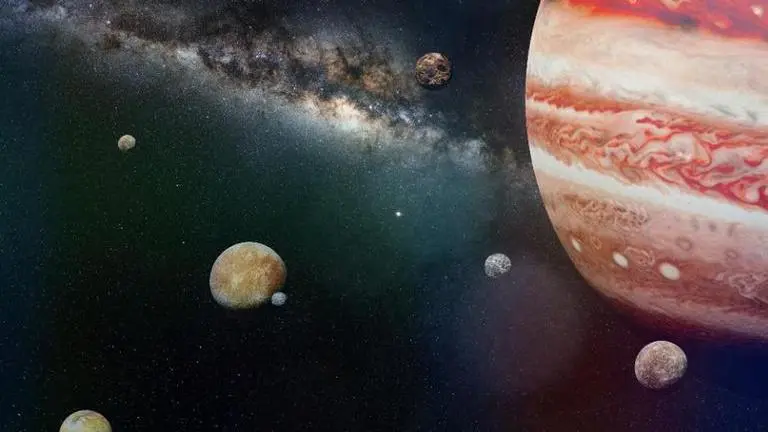Updated 25 June 2020 at 15:29 IST
Could Jupiter's moon Europa sustain life in 'disguised ocean'? NASA research suggests so
There have been some interesting discoveries about Jupiter's satellite Europa. Read on to know details and if Europa's ocean has been hiding something.
- Science News
- 3 min read

Europa is a frozen moon that orbits around Jupiter and is believed to be one of the most habitable worlds in the solar system. Recently, NASA studies have researched what Europa’s ocean is made of and what is inside the icy moon of Jupiter. Moreover, NASA has also been researching if it would be able to sustain life.
It has been found that water from the ocean sometimes erupts into space. A recent study by NASA found that Europa has occasionally been releasing water into space. So what is the disguised ocean of Europa made of?
What is Europa’s ocean made of?
Europa is slightly smaller than Earth’s moon. It is primarily made of silicate rock and has a water-ice crust and an iron-nickel core. Reportedly, for years, NASA’s Jet Propulsion Laboratory in California has been working with data that Galileo mission had provided. Whether or not life would sustain in Europa’s vast ocean is dependent on the composition of its ocean.
As scientists have not sampled it yet, they do not know much about it. However, they have been able to look at the moon’s icy surface. Europa’s icy surface is covered in ridges, fractures, and cracks.
Advertisement
Data from Galileo suggests that it that majorly has three chemical terrains: Water Ice, Sulphuric acid hydrate, and other non-ice material like salt from its ocean. The last chemical terrain (salt from the moon’s ocean) is considered as the ‘chaos’ region.
Advertisement
In this region, there could possibly be gaps where the ocean water comes through or the ice could have melted. The studies have found that it looks smooth in infrared images from Galileo. When the conditions on the Europa’s surface were simulated in a laboratory, it gave similar results and the infrared images were similar to both.
The presence of Sodium Chloride on Europa has significant implications for the understanding of the internal chemistry and its geochemical evolution through time. The studies have suggested that the circulation of hot water and may lead to a sodium chloride-rich ocean. Mohit Melwani Daswani, the lead researcher wrote in his research paper:
“It was thought that this ocean could still be rather sulfuric, but our simulations, coupled with data from the Hubble Space Telescope, showing chloride on Europa’s surface, suggests that the water most likely became chloride-rich.
In other words, its composition became more like oceans on Earth. We believe that this ocean could be quite habitable for life”.
Facts about Europa
- It is the fourth-largest moon of Jupiter out of the 79 moons.
- It is one of the largest moons in our solar system.
- Europa has been photographed by NASA’s Voyager and Galileo spacecraft.
- The discovery of Europa was made by Galileo when he discovered Ganymede, Io and Callisto on January 8th, 1610.
All image and promo image taken from Shutterstock
Published By : Anushka Pathania
Published On: 25 June 2020 at 15:29 IST




